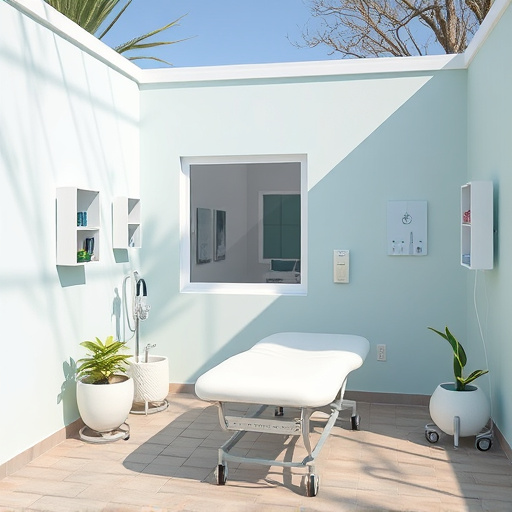Heat isolation chamber designs are crucial for managing extreme temperatures in various applications. These chambers use strategic materials and mechanisms like cold air intake and heat protection shields to minimize heat transfer, maintaining stable internal environments. Efficient airflow management prevents heat buildup while high-quality insulation materials and advanced technologies further enhance temperature control. Regular maintenance is vital. Key practices include proper cold air intake, robust heat protection shields, insulated walls, reflective surfaces, and double-glazed windows to maximize efficiency.
“Uncover the secrets of efficient heat isolation with our comprehensive guide. Explore innovative designs tailored to extreme environments, where minimizing heat transfer is paramount. We delve into the fundamentals, uncovering how ‘cold air intake’ and ‘heat protection shields’ act as cornerstone components.
Learn best practices for crafting an optimal heat isolation system, ensuring temperature control in even the most demanding scenarios. Discover expert tips and insights to revolutionize your approach to thermal management.”
- Understanding Heat Isolation Chamber Designs
- Key Components: Cold Air Intake and Heat Protection Shield
- Best Practices for Creating an Efficient Heat Isolation System
Understanding Heat Isolation Chamber Designs

Heat isolation chamber designs are an essential concept in creating environments that can withstand extreme temperatures, offering a unique solution for various applications. These chambers are meticulously engineered to manage heat flow, ensuring optimal temperature control. At the heart of their design lies the strategic integration of materials and mechanisms, such as cold air intake and heat protection shields, to create a barrier against external thermal influences.
The primary goal is to maintain a stable internal environment by minimizing heat transfer. This involves careful consideration of insulation materials, which play a crucial role in trapping heat or cooling, depending on the design’s intent. By employing advanced technologies like vacuum insulation panels or specialized gaskets, these chambers can achieve exceptional thermal resistance. Additionally, strategic air flow management ensures that cold air intake and exhaust systems are designed to prevent heat buildup while maintaining the desired temperature.
Key Components: Cold Air Intake and Heat Protection Shield

In the design of a heat isolation chamber, the integration of a cold air intake and heat protection shield stands out as a key strategic component. The cold air intake facilitates the extraction of ambient air from cooler regions, ensuring a constant flow of frigid air into the chamber to counteract internal heating. This feature is pivotal in maintaining optimal temperatures for sensitive materials or processes housed within.
Complementing this mechanism, the heat protection shield plays an equally vital role by acting as a barrier against external heat sources. It’s designed to reflect and insulate heat, preventing it from entering the chamber. The shield’s effectiveness lies in its ability to minimize thermal transfer, ensuring that the internal environment remains isolated and cool, even under extreme external conditions.
Best Practices for Creating an Efficient Heat Isolation System

Creating an efficient heat isolation system requires a multi-faceted approach that combines strategic design, high-quality materials, and careful installation. One of the best practices is ensuring proper cold air intake, allowing for a steady supply of cool air to circulate within the chamber while preventing external heat sources from penetrating. This can be achieved by implementing a heat protection shield around ventilation points, effectively blocking radiant heat transfer.
Additional considerations include using insulated walls and ceilings with high thermal resistance ratings, as well as incorporating double-glazed windows to minimize heat gain through conduction and convection. The use of reflective materials on internal surfaces can also help bounce hot air away from sensitive equipment or components, enhancing overall chamber efficiency. Regular maintenance checks are crucial to ensure the integrity of the isolation system over time, addressing any issues promptly to maintain optimal performance.
Heat isolation chambers, with their strategic use of cold air intakes and heat protection shields, offer a promising path forward for energy-efficient heating solutions. By understanding the key components and best practices outlined in this article, designers and engineers can create highly efficient systems that maximize thermal comfort while minimizing energy consumption. Integrating these innovative designs into residential and commercial spaces could significantly contribute to sustainable building practices, making our environments more comfortable and eco-friendly.














